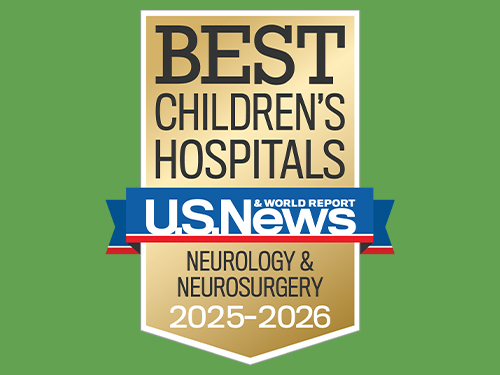What Is Meant by Abnormal Head Shape?
An abnormally shaped head is usually recognized at birth. There are three causes of abnormal head shape in infants.
- The largest group of infants with an abnormal head shape is those who have positional deformities which develop during pregnancy or while sleeping.
- The next most common group is those infants who present with early closure of the cranial sutures (craniosynostosis).
- The smallest group are infants with craniofacial syndromes, such as Apert's, Crouzon's, and Pfeiffer's.
What Congenital Syndromes Cause Abnormal Head Shape?
A small number of children who present with abnormal head shape are born with identifiable syndromes, such as Crouzon's or Apert's. These children have craniosynostosis and facial bone abnormalities as well as deformities of the hands and feet. They usually require surgery to correct the skull prior to one year of age, and at age six to eight years of age to have the facial bones moved. Finally, in adolescence, they will again require surgery on the face and jaw.
What Is Craniosynostosis and How Does It Cause Abnormal Head Shape?
Craniosynostosis is the premature (early) closure of one or more cranial sutures. These children present with an abnormal head shape that varies according to the suture involved. Those with sagittal suture involvement have long, thin skulls, while those with coronal suture involvement have a flat, short head on one or both sides, depending on whether one or both coronal sutures are involved. Children born with metopic craniosynostosis have narrow, pointed foreheads.
Surgery is ideally performed before nine months of age. In children with multiple affected sutures or with sagittal craniosynostosis, surgery is performed prior to three months of age. Surgery involves removing the fused suture and repositioning the skull and/or face.
How Do Positional Deformities Cause Abnormal Head Shape?
Infants with positional deformities may present with a number of different head shapes. They may have unilateral flattening of their posterior skull, which is plagiocephaly, and/or forehead bulging along with bilateral flattening, which is brachycephaly. When they have increased skull height and/or a long, narrow skull it is scaphocephaly. Deformities result from positioning during pregnancy, sleeping position, or from neck tightness. An asymmetrical skull can result in asymmetries of the face causing various functional problems that affect chewing, speech, breathing, and vision. Some of these infants can be managed with just positioning, such as changing their sleeping position. If the deformity persists, however, treatment may be necessary.
How Is Abnormal Head Shape Diagnosed and Treated?
Treatment of a child with an abnormal head shape requires a team approach. The goal of the team at Hermann Children's Hospital and The University of Texas Medical School at Houston is to provide the most current diagnostic and treatment methods for your child in a supportive environment The team includes a neuroradiologist, craniofacial surgeon, pediatric neurosurgeon, pediatric anesthesiologist, orthotist, and orthodontist.
Diagnosis begins with a patient history, which takes into consideration the mothers pregnancy and the presence of an abnormal fetal position. There are also questions about prematurity, birth trauma, and multiple births. The patient history also includes inquiries about the infant's sleeping position and the presence of neck tightness and/or torticollis, which is an abnormal, somewhat fixed twisting of the neck associated with muscle contractions.
Following the patient history is a physical examination, which focuses on ridging of the sutures, shape of the head and neck, and other possible deformities associated with syndromes. There is a distinctive head shape associated with early closure of specific sutures which differs from the head shape of infants with positional molding. Skull X-rays and computerized tomography are used to evaluate the presence of early fusion of the cranial sutures. Children with unusual syndromes may have underlying brain abnormalities that are best seen on MRI, magnetic resonance imaging, which is a non-invasive diagnostic technique that produces computerized images of soft tissue. Cervical spine X-rays are used in children with torticollis and/or neck tightness.
Contact Us
If you have any questions, use the online tool below to help us connect with you. To refer a patient or schedule an appointment, please contact our clinic using the information below.
- Pediatric Stroke Clinic
UT Professional Building
6410 Fannin, Suite 500
Houston, TX 77030
P: (713) 500-7164 - Pediatric Neurosurgery Clinic
6410 Fannin Street, Suite 950
Houston, TX 77030
P: (832) 325-7234 - UTHealth Houston Gulf State Hemophilia and Thrombophilia Center
6655 Travis Street, Suite 100
Houston, TX 77030
P: (832) 325-7242
To contact Children's Memorial Hermann Hospital, please fill out the form below.
